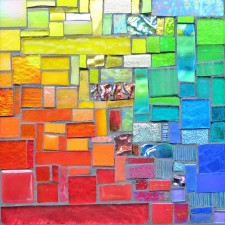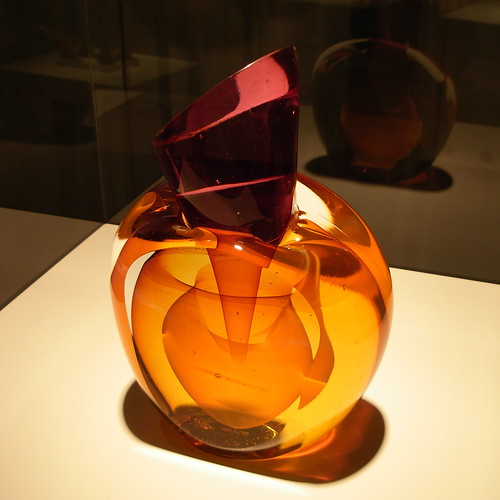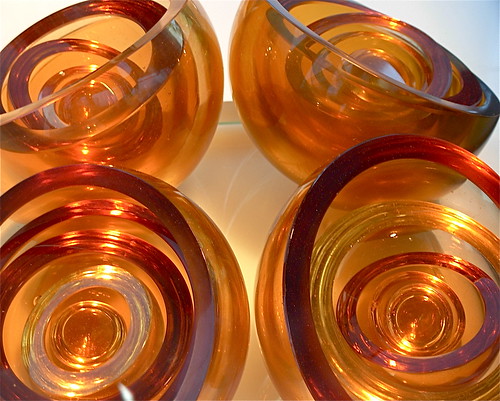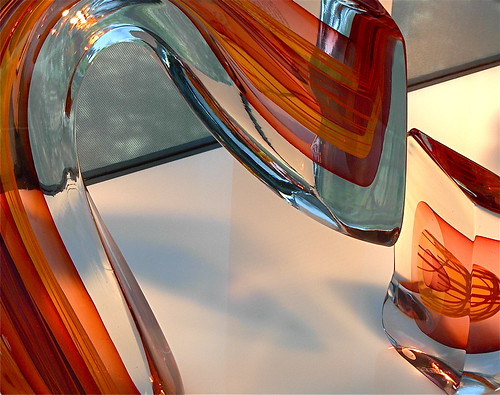On my very first trip to Corning Museum of Glass in 1995, I was smitten with the work of Harvey K. Littleton, and intrigued by the idea that Studio Glass Art had not always existed. Littleton’s father Jesse was a physicist working at Corning, and his mother Bessie, turned her kitchen into a test kitchen, baking cakes in sawed off battery jars made of Corning’s Nonex glass, and custards in the ends of lamp chimneys. Heat resistant glass cookware is now part of our kitchen vocabulary. I grew up with Pyrex bowls, dishes and pans. But in 1913, it was all new. Harvey Littleton worked at Corning the summers, and eventually after getting a degree in Industrial Design proposed setting up a studio for experimenting with glass in different forms. Corning declined. As he relates in Harvey K. Littleton and the American Studio Glass Movement,
My idea was that there ought to be continuing, ongoing, aesthetic experimentation in material apart from production. But [Corning Glass Works] didn’t buy my proposal. They believed that architects made the best designers, where you made your designs on paper and didn’t fool around with the material…I thought form was born in the material and in the hands of the artist, and that a pencil was a…poor substitute…[resulting] in a very obvious and simplistic solution.
I am struck by the assumption made by Corning in 1947 that you made designs on paper and didn’t fool around with the material. Littleton recognized that glass would be an awesome material for artists to fool around with, and he wanted to find a way to make glass outside of a factory. Now we are somewhat accustomed to the idea of going to watch glassblowers at work, or even take a class at a local college or art organization, but Littleton was working against the assumption that it just wasn’t possible on a smaller scale, that glass was an industrial material.
Littleton traveled to France and Italy, visiting artists who were working with glass, on their own. He stumbled upon Erwin Eisch at a glass school in Germany, and describes his excitement:
I saw [Eisch’s] work and I realized that he was doing what I wanted to do – play with the glass, to make forms that had no other reason for being than that he wanted to make them. Function was something to be used or not used. Totally free. Free with glass. . .
With all he had learned, Littleton, offered an experimental workshop in glass blowing for artists at the Toledo Museum of Art in 1962, and then began a graduate program at University of Wisconsin Madison, which seeded Studio glass programs at many other universities, and had students such as Marvin Lipofsky and Dale Chihuly. In celebration of the 50th Anniversary of the founding of the American Studio Glass Movement, The Art Alliance for Studio Glass has a many events planned including one at the Allentown Art Museum, The Lerner Contemporary Glass Collection, October 7, 2012-January 13, 2013.
Such delight has emerged from Harvey Littleton’s desire to bring glass to artists.



